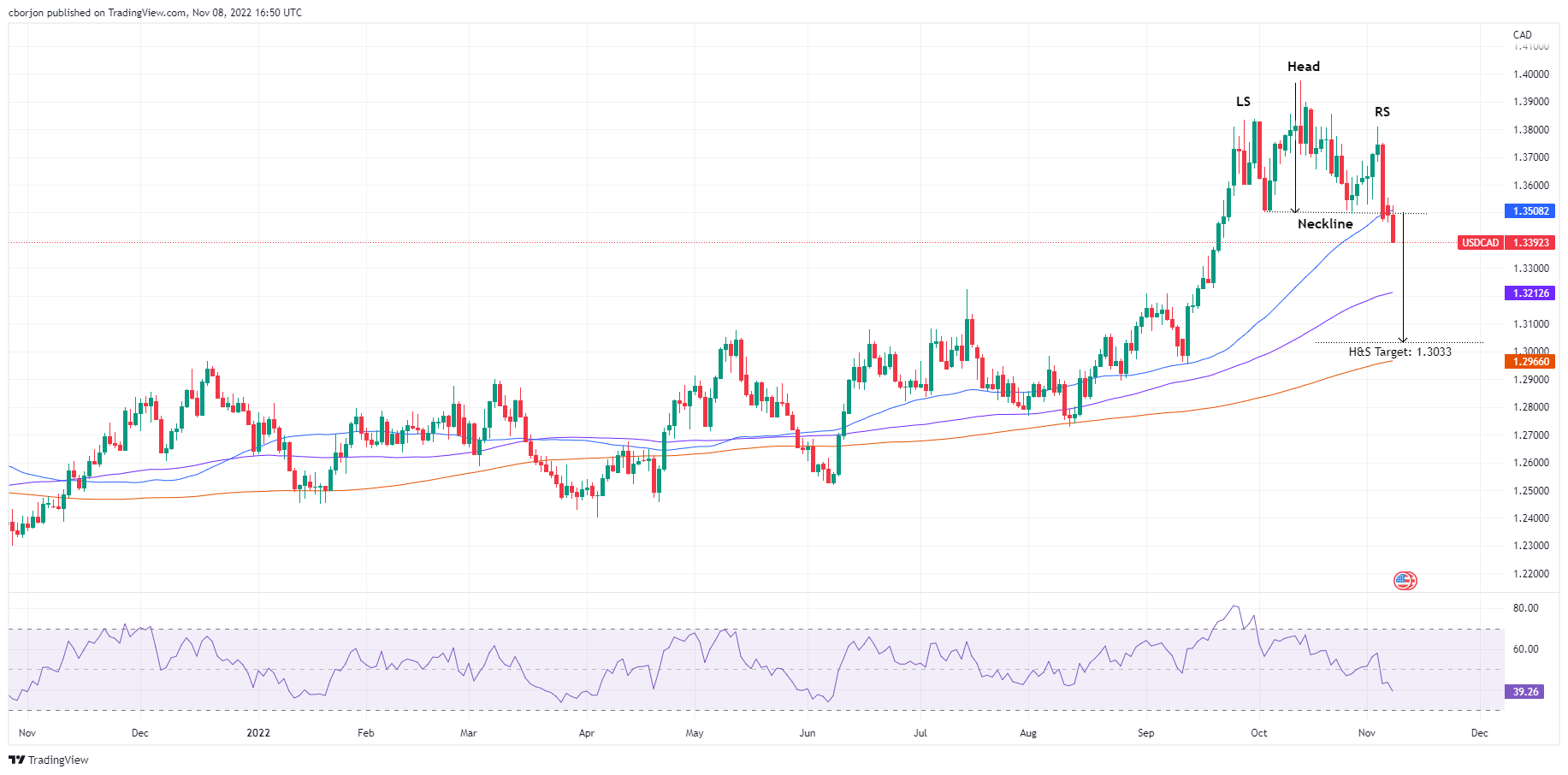- USDCAD dives below 1.3400 as the US Dollar tanks
Market news
USDCAD dives below 1.3400 as the US Dollar tanks
- USDCAD plunges close to 0.80% on Tuesday amid broad US Dollar weakness.
- Midterm elections in the United States and Thursday’s US Consumer Price Index (CPI) keeps investors leaning on market sentiment moves.
- USDCAD Price Analysis: A head-and-shoulders chart pattern to send the pair towards 1.3030, shy of the 200-day EMA.
The USDCAD tumbled below the 50-day Exponential Moving Average (EMA) as the US Dollar suddenly weakened across the board as US midterm elections got underway, which has usually been positive for US stocks,risk-perceived assets, to the detriment of the safe-haven status of the greenback. Therefore, the USDCAD is trading at 1.3390, below its opening price by 0.72% after hitting a daily high of 1.3526
The US Dollar sells off, while risk assets extend their gains
Wall Street is extending its gains after opening mixed. The American Dollar is getting battered, as shown by the US Dollar Index, down 0.55%, at 109.60, about to hit a fresh 8-week low. US Treasury yields are also heading south, as the US 10-year extends its losses by almost seven bps, at 4.149%. The United States midterm election grabbed all the headlines, while traders brace for October’s Consumer Price Index (CPI) in search of cues of what the Federal Reserve might do at the next meeting.
In the last week, US employment figures exceeded estimates, but the report was mixed. Even though more jobs were added to the economy, the unemployment rate edged higher, from September’s 3.5% to 3.7%, while wages slid. That said, investors perceived the report as the first sign that the labor market is finally easing.
Concerning the Canadian economy, the latest jobs report smashed the 10K expectations rose by 108K, while Average Hourly Wages increased by 5.5% YoY, above 5.2% of the previous month, adding upward pressures on inflation, which would open the door for further Bank of Canada tightening.
What to watch
On Wednesday, the Canadian economic calendar is empty. On the US front, Fed speakers led by John Williams and Thomas Barking would cross newswires. Data-wise, Wholesale inventories and MBA mortgage applications would be released.
USDCAD Price Analysis: Technical outlook
The USDCAD is neutral biased, though a head-and-shoulders formation in the daily chart surfaced, opening the door for further losses. Also, traders need to be aware that the USDCAD slid below the head-and-shoulders neckline, validating the chart pattern, which, as measured by the distance between the YTD high and the neckline, would fall towards 1.3033. Therefore, the USDCAD first support would be the 1.3300 figure, followed by the 100-day Exponential Moving Average (EMA) at 1.3212, followed by the psychological 1.3100.
